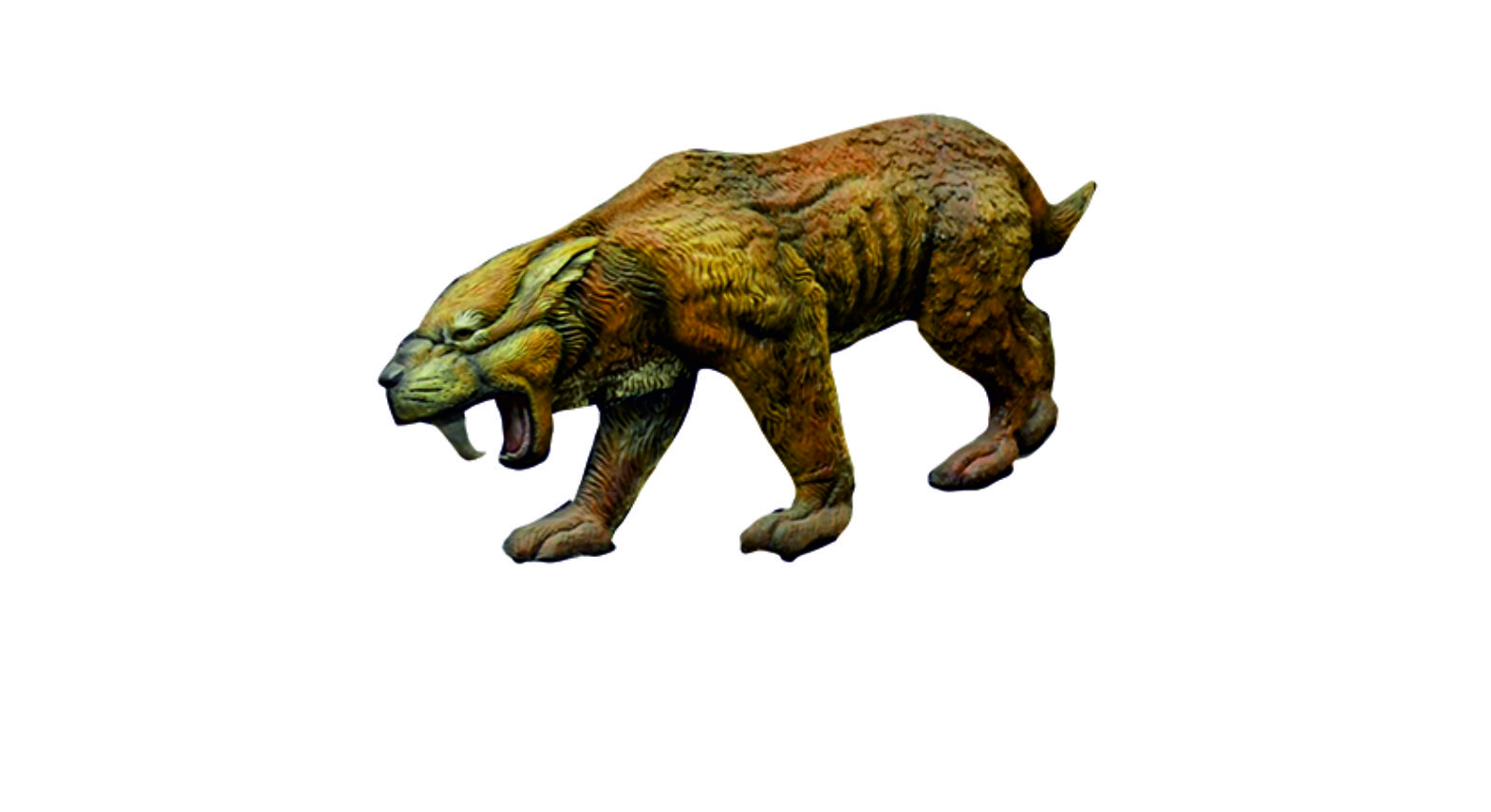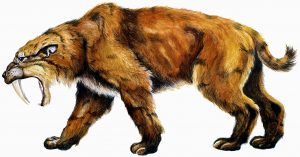
Saber-toothed tiger
Smilodon fatalis
- It was a fierce predator which roamed over the forests, brushy plains, margins of woodlands of North, Central, and South Americas
- Itwent extinct 13,000 years ago
Physical Description
- Its 30 cm skull had 2 sabre-like 15 cm long canine teeth which were serrated on both edges and oval in cross-section.
- It had relatively short legs and a short, bobbed tail.
- The front and back limbs are about the same length, and its front legs were especially powerful and its body was adapted for springing onto prey.
- It was an ambush predator; not built for long-distance running.
- It preyed on large mammals such as bison, giant ground sloths, young mammoths and mastodons, horses, camels.
- Males and females are same based on size.
- It had strong retractable claws.
Size
It was a bit smaller than a modern-day lion, but much heavier.
Body length – 1.5 – 2.2 m
Height at shoulder – 1.1 m
Tail length – 35 cm
Weight – 160 – 300 kg.
Interesting facts
- About 3,000 fossilized cats have been discovered from the La Brea tar pits in California and itis the State Fossil of California.
- It had very powerful jaw and neck muscles that can stab the prey with its deadly maxillary canine sabre teeth.
- Smilodon jaws could be opened to an angle of about 120 degrees, almost twice the gape of modern cats.
- Flexible hyoid bone supporting the tongue similar to modern lion’s may have allowed Smilodonto roar
- Brain of Smilodon had furrows like all modern cats, indicating similar hearing, eyesight and limb coordination.
Causes for extinction
- Climate change and human hunting were thought to be the main causes.
- Smilodon survived so long as its prey had vegetation.
